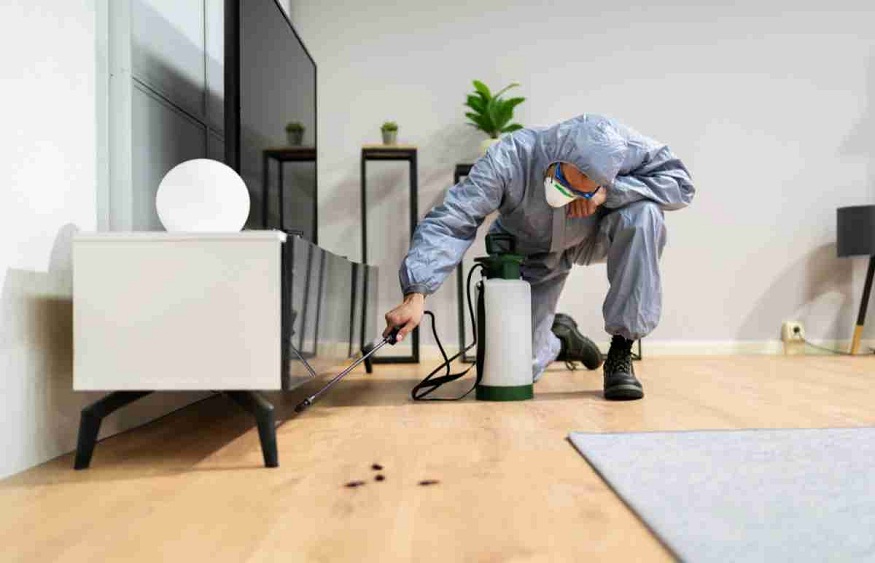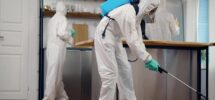 We welcome guests into our homes, but not pests like cockroaches, termites, or rodents. Dealing with these uninvited visitors on your own can be frustrating, and many DIY solutions fail to produce lasting results.
We welcome guests into our homes, but not pests like cockroaches, termites, or rodents. Dealing with these uninvited visitors on your own can be frustrating, and many DIY solutions fail to produce lasting results.
By hiring pests control professional, you ensure your pest problem is addressed safely and effectively. Most treatments are precisely targeted, allowing trained experts to handle the work with minimal disruption to your household. It’s beneficial to be home to discuss any specific concerns with the pest control specialist during the scheduled visit.
While professionals will manage the heavy lifting, there are a few preparatory steps you can take to optimize the treatment’s success. Here’s a checklist to prepare your home for a pest control visit.
General Tips to Prepare Your House For A Pest Control Service
When scheduling a pest control service, the company may provide specific guidelines to help ensure they can access all areas that need treatment. If not, here are some universal preparation tips to prepare your home.
-
Take photos of your home
Admitting a pest problem can be challenging, especially when busy routines might contribute to it.Common pests, even those that seem harmless, can quickly invade when regular maintenance slips. For instance, failing to empty the trash frequently can lead to a kitchen fruit fly issue. Take a few photos of the affected areas; this helps your pest control provider understand possible causes and focus on the primary problem areas.
-
Tidy Up
Even if your pest control service is scheduled at short notice, take some time to tidy up—especially after capturing those photos. Exterminators need clear access to walls, corners, and areas behind furniture where pests might be hiding.
Suppose a full cleaning isn’t possible; at least shift furniture and clutter away from corners and walls. This will allow the technician to treat high-traffic pest areas more effectively. Also, remember to store and cover food to avoid any risk of contamination during the treatment.
-
Declutter
Pest control technicians need access to every corner of your home to apply treatments effectively. Large furniture or other obstacles against walls can prevent them from reaching all the necessary spots.
Other items, like dishes or toys left around, can also create barriers. To help the pest control team work efficiently, remove any objects that could obstruct their path, ensuring clear access throughout the treatment areas.
-
Move pets and family members
A common concern when scheduling pest control is whether to vacate the property. This largely depends on the type of treatment. Organic pest control generally allows you to stay on-site, but chemical treatments can pose risks for children, elderly family members, and pets. For their safety, keep them out of the home during the service.
This also gives the technicians more freedom to work without distractions. For safety, be sure to ask your pest control provider how long they recommend staying away from the treated areas.
-
Cover furniture for pest control
During pest control treatments at home, professionals often use potent chemicals and sprays to eliminate pests effectively. While these treatments are highly effective, they can sometimes leave stubborn stains on upholstered furniture or other exposed surfaces.
Protecting your furniture is important to avoid unwanted damage. One simple yet effective approach is to cover it with plastic sheets, which act as a barrier against accidental spills or drips.
However, whether or not you need to cover your furniture ultimately depends on the type of pest control treatment being conducted. For most general treatments, covering furniture is recommended. However, for specialized treatments, like termite control, especially if you’re in a high-risk area such as Delhi, it may be advised not to cover certain furniture pieces.
Conclusion
After a successful pest control treatment, you’ll likely see a significant reduction in pests. However, don’t become complacent. Continue to monitor for any signs of a return and maintain regular cleaning to discourage future infestations.
If you’re noticing signs of a pest problem, don’t hesitate to contact a professional pest control service to schedule a consultation and reclaim your space.


